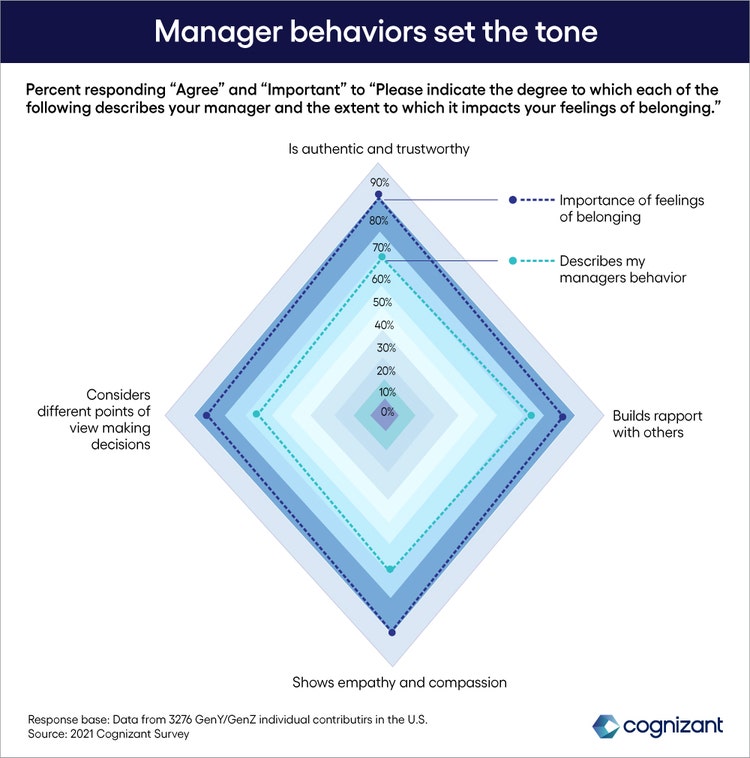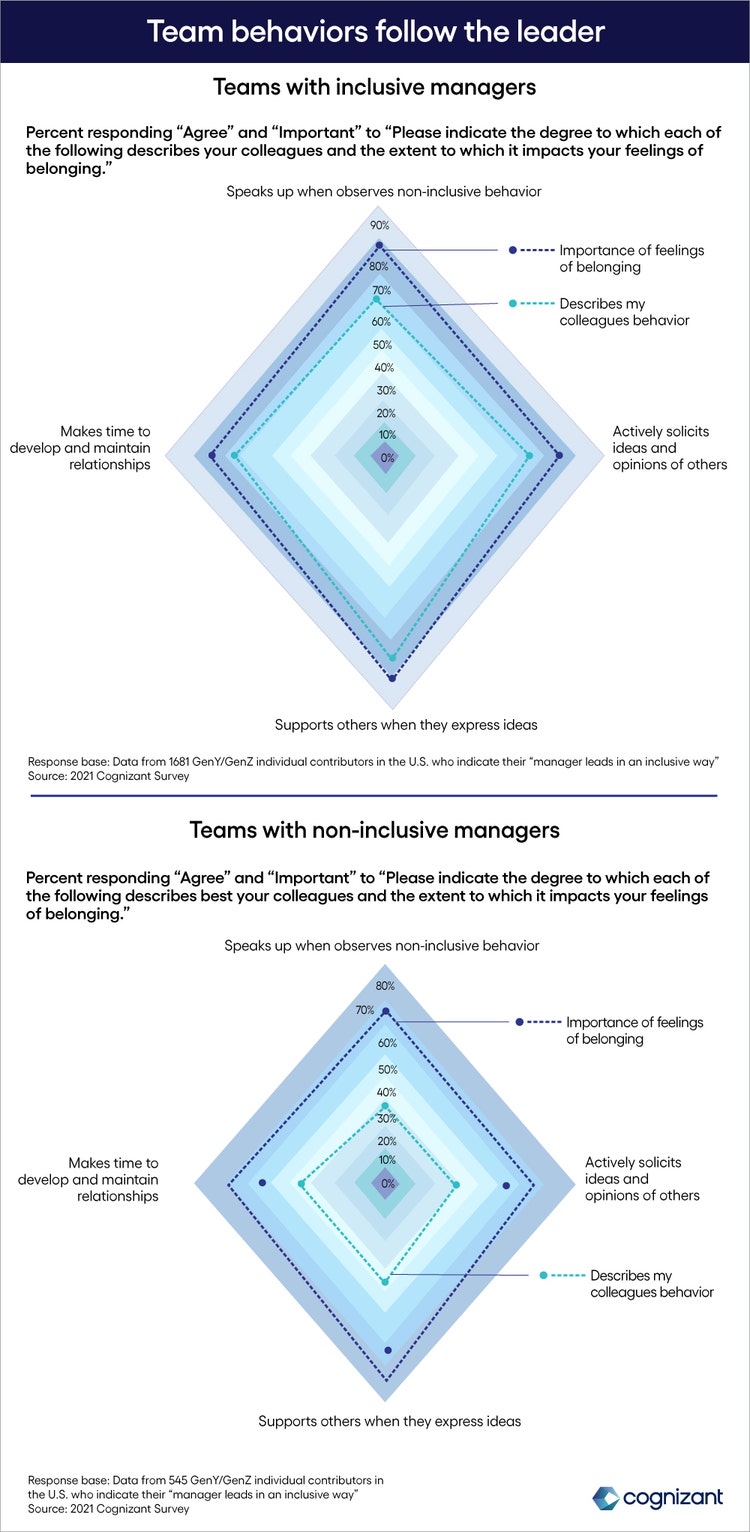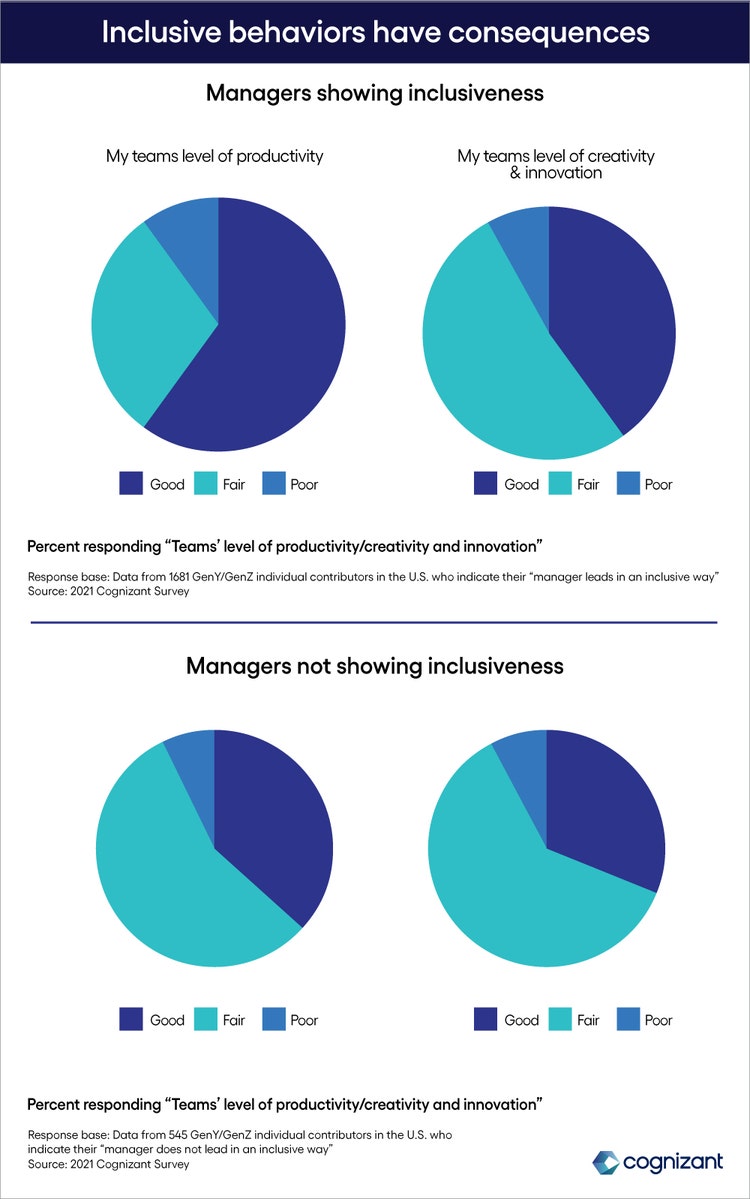
When is your workplace psychologically safe? When people are talking styles-h2 text-white
<p><span class="medium"><br>November 21, 2022</span></p>
When is your workplace psychologically safe? When people are talking
<p><b>Silence is not golden when it comes to psychological safety at work. Here’s how organizations can support employees to talk about what matters.</b></p>
<p>Economic concerns have many people on edge, wondering if their jobs are secure enough to survive. But while business managers might hear these worries expressed among their teams, they also need to be attuned to what else they’re hearing or—more importantly—not hearing.</p> <p>Are employees talking about what they are struggling with? Are they asking for help? Are they identifying problems, expressing differing points of view and surfacing mistakes? Are they readily offering their insights, identifying opportunities and creating solutions?</p> <p>The fact is, if employees aren’t talking, it’s not that there isn’t anything to talk about. With potential layoffs, hiring freezes or slowdowns on the horizon, they may not feel “safe” to freely express themselves.</p> <p>When employees hold back, the consequences for organizations can be significant, ranging from preventable failures to missed opportunities. As managers prepare to face the uncertainties of 2023, it’s critical to create a safe team environment that encourages employees to “speak up.”</p> <h4>The link between inclusion and psychological safety</h4> <p>In 1965, organization experts Edgar Schein and Warren Bennis <a href="https://www.forbes.com/sites/timothyclark/2021/06/21/what-psychological-safety-is-not/?sh=4a02e3586452" target="_blank" rel="noopener noreferrer">defined team psychological safety</a> as “providing an atmosphere where one can take chances without fear and with sufficient protection” from being marginalized or punished in some way. A psychologically safe team environment enables employees to:</p> <ul> <li><b>Learn.</b> Ask questions, make mistakes, ask for help, give and receive feedback.<br> <br> </li> <li><b>Contribute.</b> Offer unique insights, ideas and suggestions.<br> <br> </li> <li><b>Challenge.</b> Address difficult topics, offer different points of view and challenge others.<br> <br> </li> <li><b>Feel included or belonging.</b> Feel welcome, involved, valued and connected.</li> </ul> <p>Creating a climate of psychological safety at the team level <a href="https://hbr.org/2022/03/research-to-excel-diverse-teams-need-psychological-safety" target="_blank" rel="noopener noreferrer">is one of the strongest predictors</a> of team effectiveness. This is particularly true for diverse teams. Not only are diverse teams better at identifying and implementing innovative ideas; they are also <a href="https://hbr.org/2022/08/resilient-organizations-make-psychological-safety-a-strategic-priority" target="_blank" rel="noopener noreferrer">more effective</a> at driving performance and adapting to changing conditions.</p> <h4>Managerial behaviors key to psychological safety</h4> <p>So, how do managers create a team culture that’s both inclusive and psychologically safe? While tone at the top of an organization is certainly important, Harvard professor Amy Edmonson believes that psychological safety is nurtured deep inside the middle of the organization at the team or group level.</p> <p><a href="https://digitally.cognizant.com/the-power-and-impact-of-managerial-allies-codex6954" target="_blank" rel="noopener noreferrer">In our own research</a>, we’ve found the key is for managers to act in an inclusive way. While inclusive leadership can encompass a wide range of behaviors, our research reveals that the largest impact on employee feelings of psychological safety occurs when managers exhibit a very specific set of behaviors (see Figure 1).</p> <p>These behaviors include:</p> <ul> <li><b>Building relationships.</b> Managers who consistently balance the drive for results with an empathetic concern for the well-being of team members are able to build strong trusting relationships. They routinely look for opportunities to connect with team members and do so in an authentic and transparent way.<br> <br> </li> <li><b>Showing curiosity.</b> They approach conversations with an open mind, actively listening and asking clarifying questions. They routinely leverage the knowledge and expertise of others when making decisions and, in doing so, are able to bring issues out into the open and make them discussable.<br> <br> </li> <li><b>Demonstrating self-awareness.</b> They create a climate of candor. As managers, they monitor how they respond to bad news, dissenting voices and feedback. By responding appreciatively and productively, they make it safe for team members to engage, contribute and challenge.</li> </ul>

#
<p><span class="small"> Figure 1</span></p> <p>When it comes to creating a climate of team psychological safety, actions really do speak louder than words. Our research shows that by setting the tone for team climate through their own behaviors, managers can have a significant impact on coworker behavior. <br> </p> <p>In fact, on teams led by inclusive managers, members are more likely to develop and maintain relationships, actively solicit insights, support others when expressing ideas and opinions, and speak up when they observe non-inclusive behavior. These behaviors show a significant drop-off when a non-inclusive manager is in charge (see Figure 2).</p>

#
<p><span class="small">Figure 2</span></p> <p>As we saw in Figure 2, respondents are clear that inclusive coworker behavior has an important impact on their feelings of belonging. What they also tell us is when the team is operating at a high level of inclusiveness—creating a psychologically safe work environment—they experience far higher levels of creativity and productivity at the team level (see Figure 3).<br> </p>

#
<p><span class="small">Figure 3</span></p> <h4>Investing in development that matters<br> </h4> <p>Unfortunately, as seen in Figure 1, our respondents also shared that, overall, managers are not exhibiting the behaviors that matter most. In fact, according to Korn Ferry, <a href="https://www.kornferry.com/insights/featured-topics/future-of-work/2022-future-of-work-trends" target="_blank" rel="noopener noreferrer">only 5% of leaders</a> globally act in an inclusive way. Change Catalyst <a href="https://changecatalyst.co/allyshipreport/" target="_blank" rel="noopener noreferrer">suggests</a> that a lack of knowledge, skills and confidence, along with a supportive workplace, are the primary drivers of the managerial skill disconnect we identified.</p> <p>While leadership development programs that broadly support diversity, equity and inclusion are important, it’s essential to invest in programs that cultivate the specific manager behaviors that create a climate of team psychological safety. Such enabling programs focus on topics like:</p> <ul> <li><b>Emotional intelligence skills. </b>Inclusive managers are self-aware and empathetic. They can understand and regulate their own emotions, as well as read and respond to the emotional state of their team members.<br> <br> </li> <li><b>Open dialog skills.</b> Inclusive managers facilitate team conversations in a way that enables team members to engage, contribute and challenge with an attitude of openness. They know how to handle challenging interactions so that members feel heard, respected and validated.<br> <br> </li> <li><b>Questioning skills.</b> Great questions go beyond the mere exchange of information. Inclusive managers use different questioning techniques to inspire team learning, facilitate risk-taking and enable collaboration, performance improvement and innovation.<br> <br> </li> <li><b>Mindful listening skills.</b> What seems so simple is actually quite hard. Inclusive mangers actively listen without interruption, judgment or criticism.</li> </ul> <p>It’s time to <a href="https://digitally.cognizant.com/how-to-create-a-belonging-superpower-managerial-allyship-training-wf1185390" target="_blank" rel="noopener noreferrer">close the managerial skill gap</a>, and training is an important first step. Investing in and scaling up programs that equip managers with specific capabilities can have the strongest impact on employee feelings of psychological safety and belonging.</p> <p>Given the pace of change, it will only grow more important to develop a psychologically safe work environment. Employees need to feel comfortable sharing their ideas and opinions, asking questions, expressing concerns and disagreeing in order to create high-performing teams.</p> <p>Businesses that know what to listen for—and how to instill the behaviors that help team members speak up—will be in the best position to succeed.</p> <p><i>To learn more, visit the </i><a href="/content/cognizant-dot-com/us/en/about-cognizant/diversity-and-inclusion.html" target="_blank" rel="noopener noreferrer"><i>Diversity & Inclusion</i></a><i> section of our website or </i><a href="/content/cognizant-dot-com/us/en/about-cognizant/contact-us.html" target="_blank" rel="noopener noreferrer"><i>contact us</i></a><i>.</i></p> <p><i>This article was written by Margaret Schweer, COO and Managing Principal of Tammy Erickson Associates.</i></p>
<p>We’re here to offer you practical and unique solutions to today’s most pressing technology challenges. Across industries and markets, get inspired today for success tomorrow.</p>
